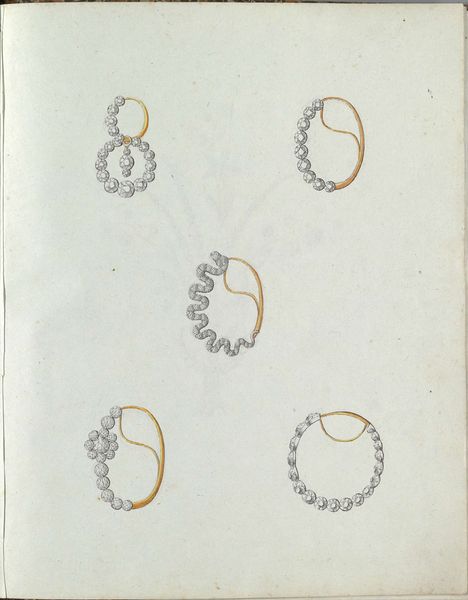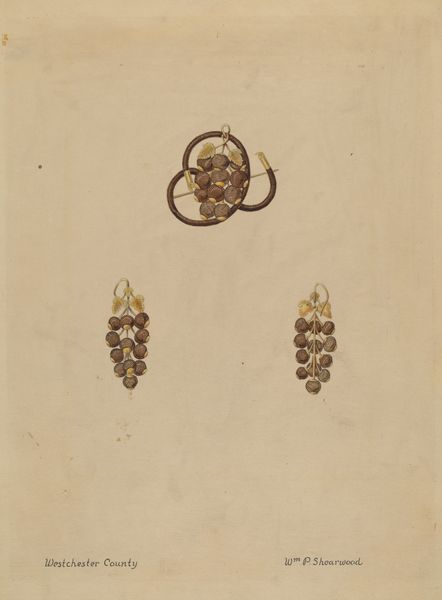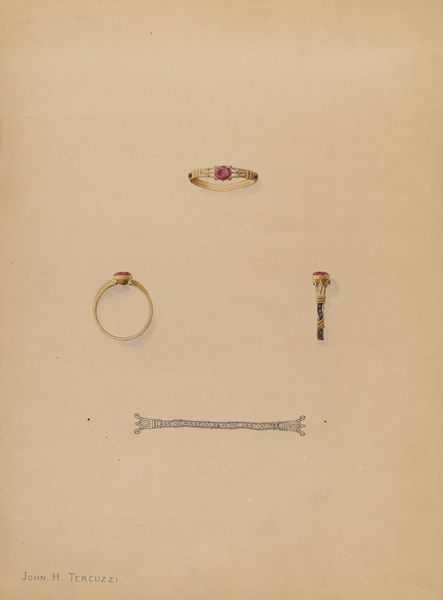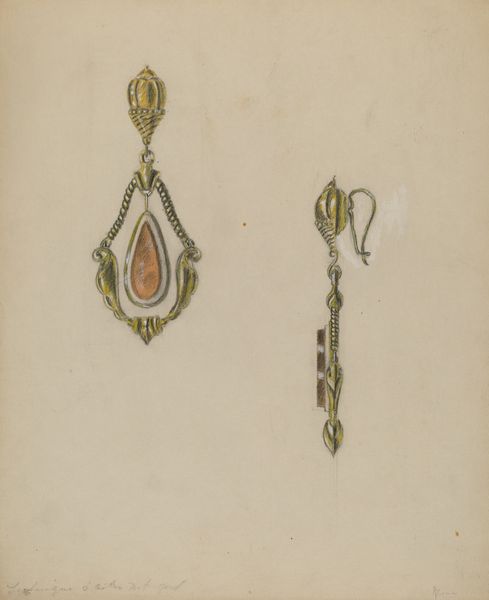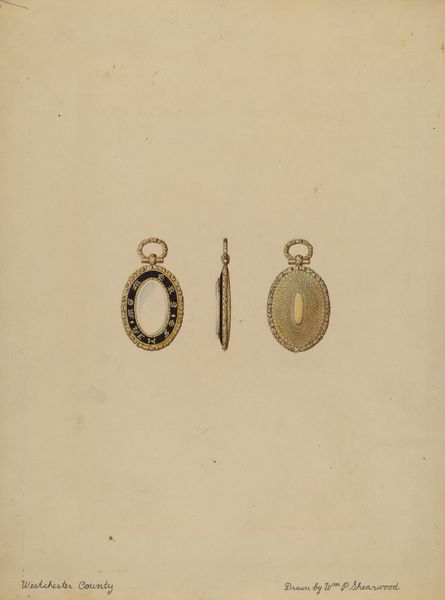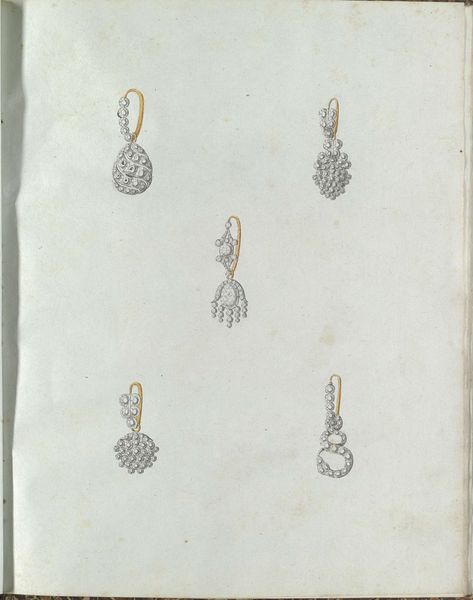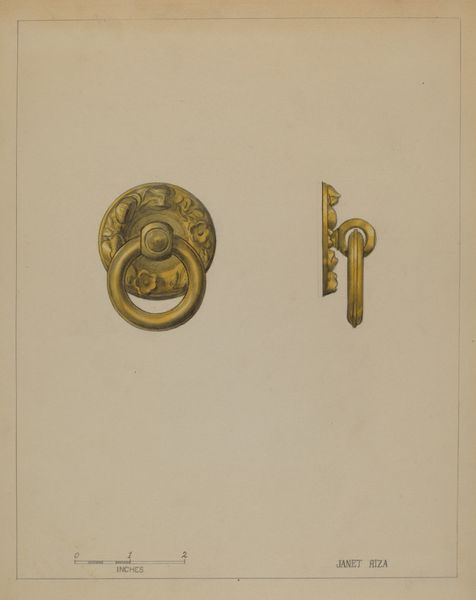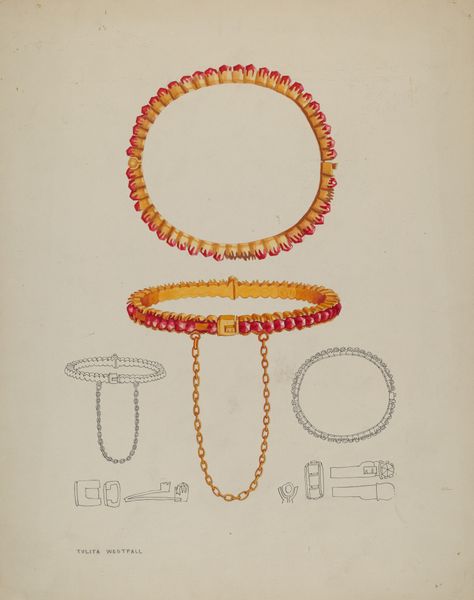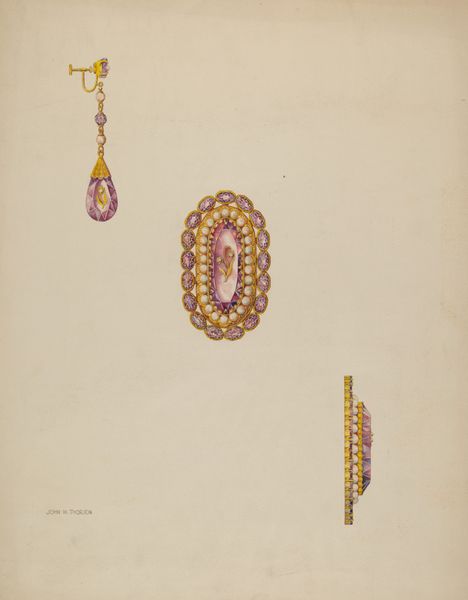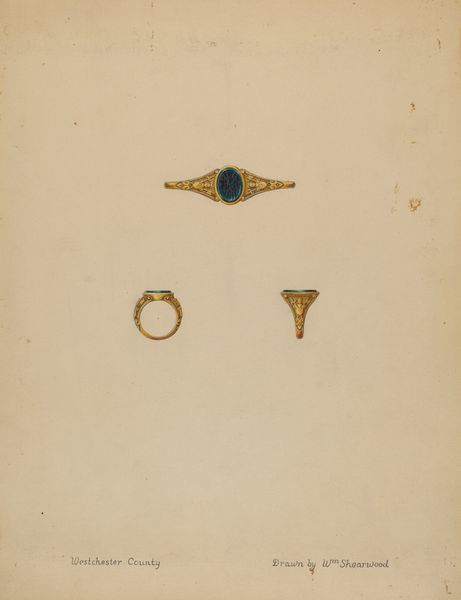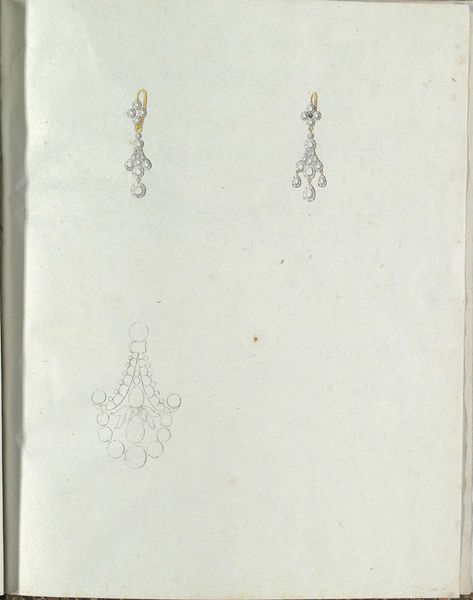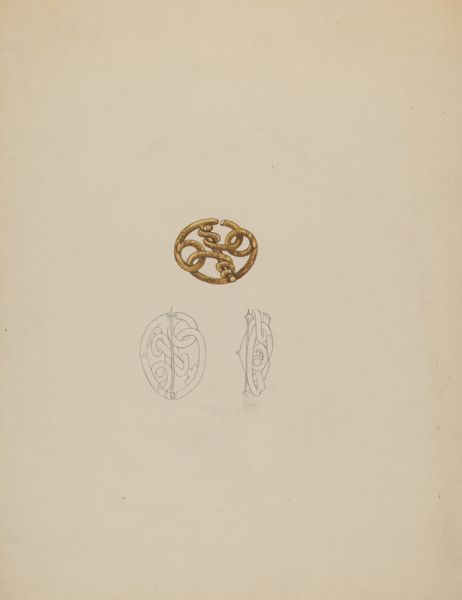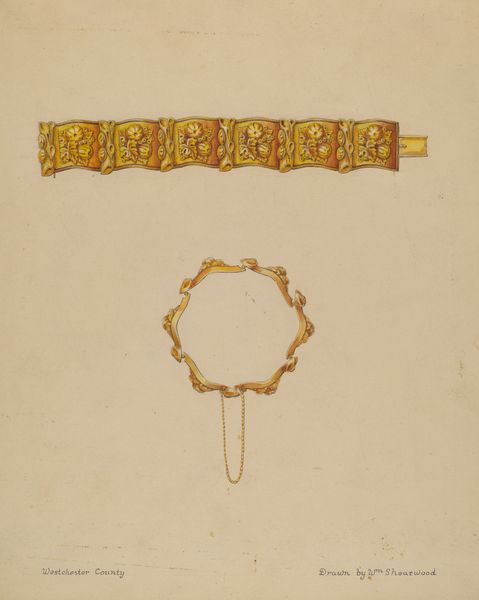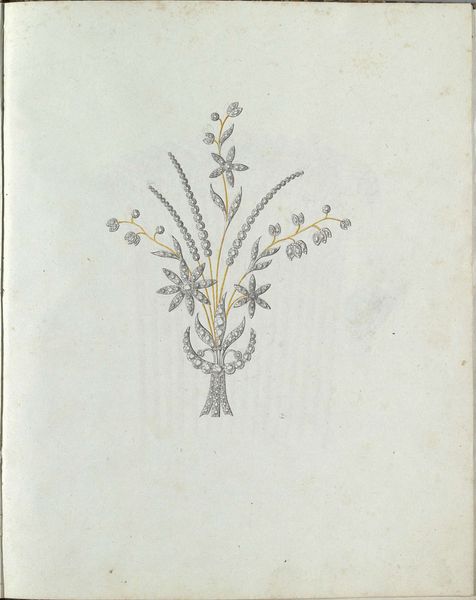
drawing, watercolor
#
drawing
#
water colours
#
watercolor
#
romanticism
#
watercolor
Dimensions: height 220 mm, width 178 mm
Copyright: Rijks Museum: Open Domain
Curator: This delicate watercolor piece is called "Vijf juwelen, waarvan één met een tros bessen," which translates to "Five Jewels, one with a bunch of berries." Carl Friedrich Bärthel created this around 1800-1810. Editor: They’re so enchanting! They have a light touch. These almost look like quick sketches or concept drawings, capturing the light playing on each jewel. There’s an ephemeral quality, as if they might just fade away. Curator: Indeed. Consider how the display and ownership of such items signified status in that period. These jewelry designs reflect not just personal adornment but a statement of social position. The meticulous rendering points towards its possible use in a jewelry catalogue. Editor: I'm curious about the implications of designing jewels, and not showing their wearers. Are we meant to consider these for a specific class, race, or gender? It prompts reflections on the historical contexts and who exactly benefited from these beautiful adornments. The absence of figures becomes striking when thinking about it through a contemporary lens. Curator: Absolutely. During that era, these drawings catered to wealthy clientele, signifying luxury and exclusivity, mirroring and solidifying social structures and political hierarchies. The subtle rendering in watercolour enhanced the perceived value. Editor: Watercolors allow this feeling of being unfinished. The jewels appear delicate, precious but simultaneously vulnerable. How subversive would it be to take ownership of a form that visually encapsulates oppression and turn it into a message of power for those originally disenfranchised? It forces me to grapple with art as both a reflection of inequality and a possible site of change. Curator: I concur. Bärthel's "Five Jewels," initially just beautiful jewelry depictions, become symbols of a layered and challenging past through our discussion. Editor: Agreed. Viewing artwork with awareness allows for both critique and transformative reimagining, bringing vital historical dialogue into modern understanding.
Comments
No comments
Be the first to comment and join the conversation on the ultimate creative platform.
